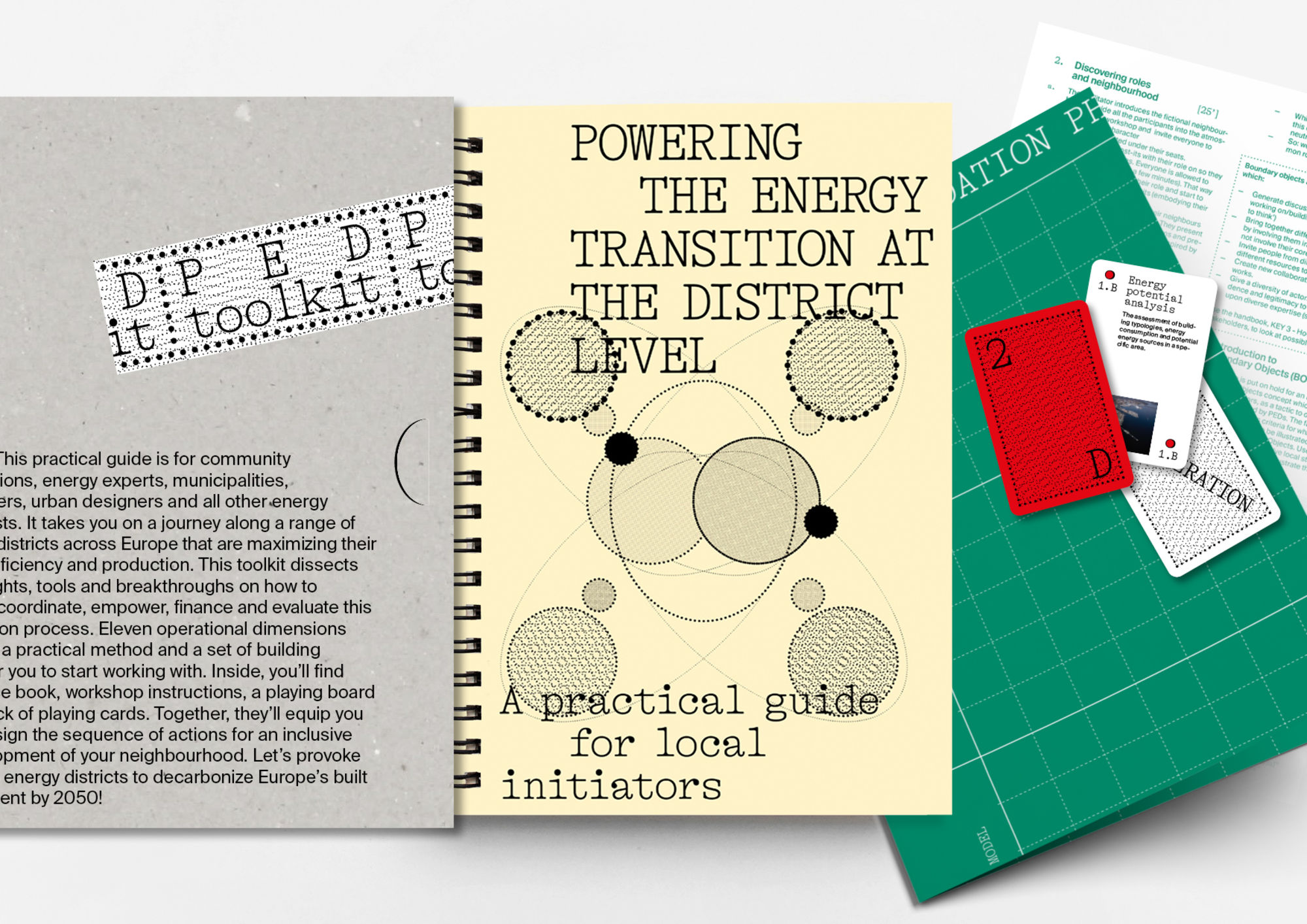Our built environment accounts for 35% of all energy-related greenhouse gas emissions. For that reason, it is a crucial lever to decarbonise our society by 2050. Its transformation is one of the more complex challenges facing society in every city and village in Europe. But today, the built environment is lagging behind in the energy transition. All our creative capacity should be focused on devising and implementing strategies that reduce the energy demand and consumption of our buildings by 40% while connecting them to 100% renewable energy sources.

This practical guide is intended for neighbourhood organizations, energy experts, municipalities, researchers, urban designers and all other energy enthusiasts. It takes you on a journey through a series of inspiring neighbourhoods across Europe that are maximizing their energy efficiency and production. This toolkit dissects their insights, tools and breakthroughs on how to prepare, coordinate, stimulate, finance and evaluate this co-creation process. Eleven operational dimensions structure a practical methodology and a set of building blocks you can get started with. Inside, you will find a publication, workshop instructions, a game board and a deck of cards. Together, they provide you with the tools to design a sequence of actions for inclusive (re)development of your neighbourhood. Let's trigger a wave of energy neighbourhoods to decarbonize Europe's built environment by 2050!
Why focus on the neighbourhood scale?
Since Europe's energy transition affects all households and organizations in every neighbourhood, the transformation can only happen if they actively participate. We need a double shift: a change in the energy use of citizens, businesses and institutions on the one hand, and a fundamental transformation of the physical infrastructure that makes up our energy systems, buildings and public spaces on the other. Working in and with the neighbourhood allows us to realize these two transitions in an integrated, collective and inclusive way. And it offers a unique opportunity to embed the necessary technical investments in energy efficiency and production in a broader motivation: achieving a more qualitative and healthier living environment for all.
How did this toolkit come about?
This PED toolkit fits into our mission to support local initiators in innovative and integrated breakthrough projects. It contains a wealth of information derived from interviews, webinars and site visits we organized over the past two years as part of the European research project Cities4PEDs with test cases in Brussels, Stockholm and Vienna. We also added our 'lessons learned' from seven years of working on energy districts, in Bospolder-Tussendijken as part of IABR-Atelier Rotterdam, in Eeklo (Ghent) as part of IABR-Atelier Oost-Vlaams Kerngebied and in Brussels' Noordwijk, among others.
Where can you find this toolkit?
This toolkit offers inspiration, building blocks and a methodology, for integrated projects in Europe, and specifically also in Brussels and Flanders. As part of the 100 Neighbourhoods Platform, we are already using it with ten pioneering Flemish local authorities. And in Ghent, we are applying it in the Living Lab Muide Meulestede Fossilfree. Together with experiments in many other places, we are thus building a new practice of integrated neighbourhood transformation.
We also demonstrate the toolkit at various public forums: e.g. Energy Mission in Genk (BE), the Energy Cities Grafting Cities conference in Modena (IT), the SET Plan Conference in Barcelona (ES), the VRP World Day of Urbanism in Mechelen (BE).
Would you like to get your hands on a toolkit yourself? You can still order it via this link. The kit includes the publication, workshop instructions, a playing board and a deck of cards. The publication itself can also be read online: you can find the digital version at the bottom of this page.